One of the query (given below) is taking 90+ seconds to execute. It returns ~500 rows from a rather large table LogMessage. If ESCAPE N'~' is removed from the query it executes within few seconds. Similarly if TOP (1000) is removed, it executes within few seconds. The query plan shows Key Lookup (Clustered) PK_LogMessage, Index Scan (NonClustered) IX_LogMessage and Nested Loops (Inner Join) in the first case. When the clauses ESCAPE N'~' or TOP (1000) are removed the query plan changes and shows Clustered Index Scan (Clustered) PK_LogMessage. While we are looking into adding more indexes (probably on ApplicationName), we would like to understand what is going on currently.
The query is being generated from Entity Framework in case you wonder why it is being written this way. Also the actual query is more complex but this is the shortest possible version that exhibits the same behavior.
Query:
SELECT TOP (1000)
[Project1].[MessageID] AS [MessageID],
[Project1].[TimeGenerated] AS [TimeGenerated],
[Project1].[SystemName] AS [SystemName],
[Project1].[ApplicationName] AS [ApplicationName]
FROM
(
SELECT
[Project1].[MessageID] AS [MessageID],
[Project1].[TimeGenerated] AS [TimeGenerated],
[Project1].[SystemName] AS [SystemName],
[Project1].[ApplicationName] AS [ApplicationName]
FROM
(
SELECT
[Extent1].[MessageID] AS [MessageID],
[Extent1].[TimeGenerated] AS [TimeGenerated],
[Extent1].[SystemName] AS [SystemName],
[Extent1].[ApplicationName] AS [ApplicationName]
FROM
[dbo].[LogMessage] AS [Extent1]
INNER JOIN
[dbo].[LogMessageCategory] AS [Extent2]
ON
[Extent1].[CategoryID] = [Extent2].[CategoryID]
WHERE
([Extent1].[ApplicationName] LIKE N'%tier%' ESCAPE N'~')
) AS [Project1]
) AS [Project1]
ORDER BY
[Project1].[TimeGenerated] DESC
Table LogMessage:
CREATE TABLE [dbo].[LogMessage](
[MessageID] [int] IDENTITY(1000001,1) NOT NULL,
[TimeGenerated] [datetime] NOT NULL,
[SystemName] [nvarchar](256) NOT NULL,
[ApplicationName] [nvarchar](512) NOT NULL,
[CategoryID] [int] NOT NULL,
CONSTRAINT [PK_LogMessage] PRIMARY KEY CLUSTERED
(
[MessageID] ASC
)WITH (PAD_INDEX = OFF, STATISTICS_NORECOMPUTE = OFF, IGNORE_DUP_KEY = OFF,
ALLOW_ROW_LOCKS = ON, ALLOW_PAGE_LOCKS = ON, FILLFACTOR = 90) ON [PRIMARY]
) ON [PRIMARY]
ALTER TABLE [dbo].[LogMessage] WITH CHECK ADD CONSTRAINT [FK_LogMessage_LogMessageCategory] FOREIGN KEY([CategoryID])
REFERENCES [dbo].[LogMessageCategory] ([CategoryID])
ALTER TABLE [dbo].[LogMessage] CHECK CONSTRAINT [FK_LogMessage_LogMessageCategory]
ALTER TABLE [dbo].[LogMessage] ADD DEFAULT ((100)) FOR [CategoryID]
CREATE NONCLUSTERED INDEX [IX_LogMessage] ON [dbo].[LogMessage]
(
[TimeGenerated] DESC
)WITH (PAD_INDEX = OFF, STATISTICS_NORECOMPUTE = OFF, SORT_IN_TEMPDB = OFF,
IGNORE_DUP_KEY = OFF, DROP_EXISTING = OFF, ONLINE = OFF, ALLOW_ROW_LOCKS = ON,
ALLOW_PAGE_LOCKS = ON, FILLFACTOR = 90) ON [PRIMARY]
Table LogMessageCategory:
CREATE TABLE [dbo].[LogMessageCategory](
[CategoryID] [int] NOT NULL,
[Name] [nvarchar](128) NOT NULL,
[Description] [nvarchar](256) NULL,
CONSTRAINT [PK_LogMessageCategory] PRIMARY KEY CLUSTERED
(
[CategoryID] ASC
)WITH (PAD_INDEX = OFF, STATISTICS_NORECOMPUTE = OFF, IGNORE_DUP_KEY = OFF, ALLOW_ROW_LOCKS = ON, ALLOW_PAGE_LOCKS = ON) ON [PRIMARY]
) ON [PRIMARY]
Query Plan 1 (takes 90+ seconds)

Query Plan 2 (takes ~3 seconds)
